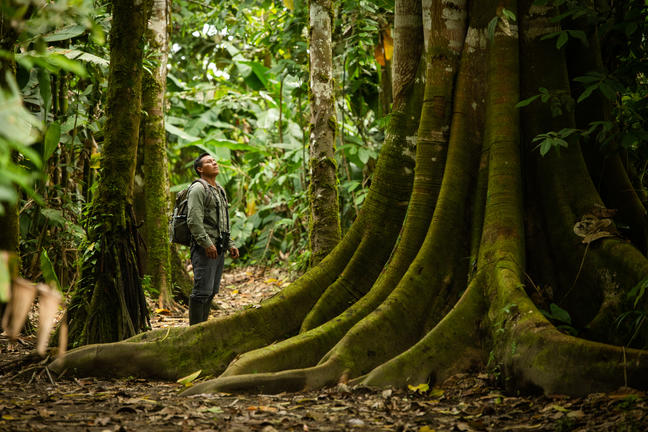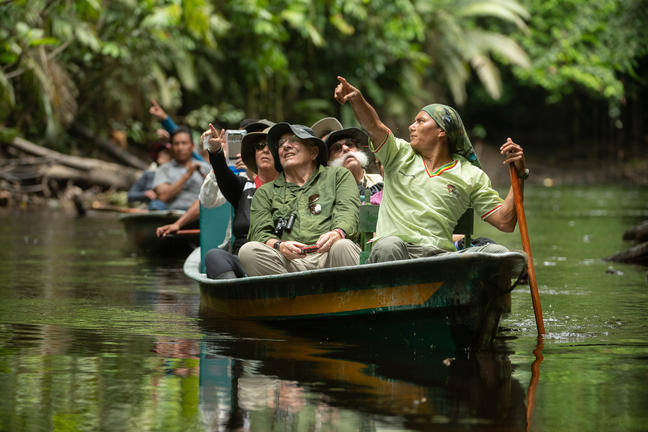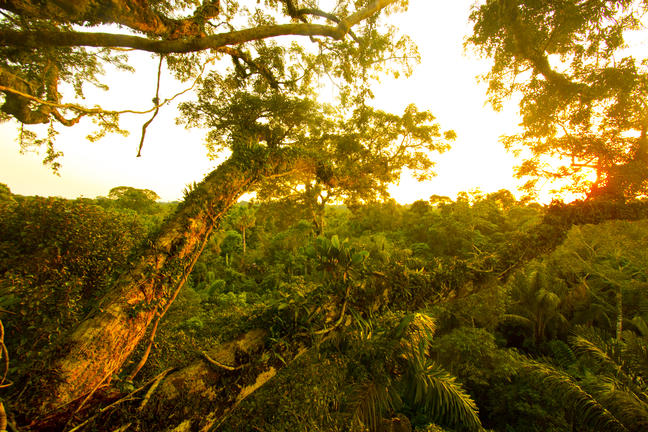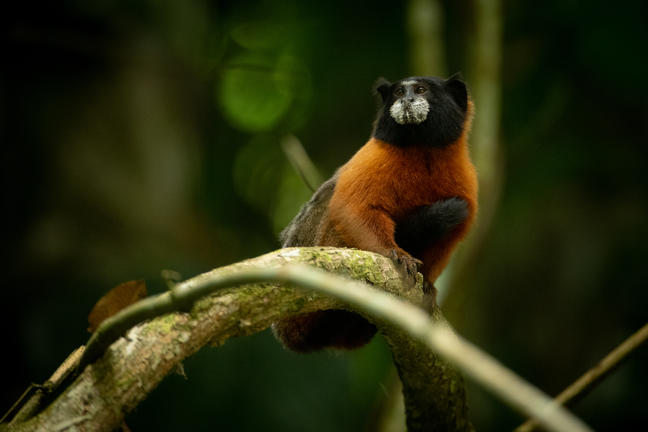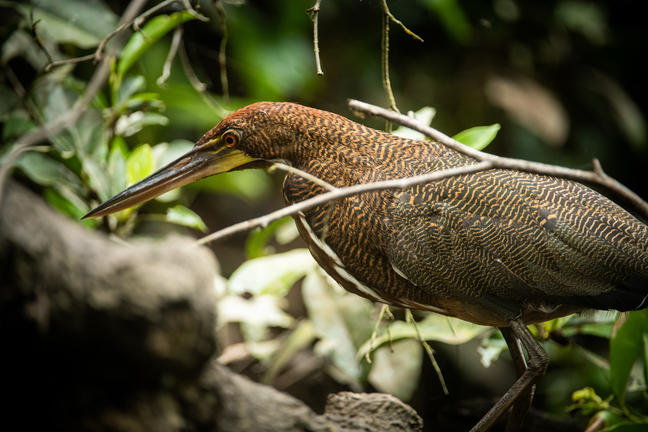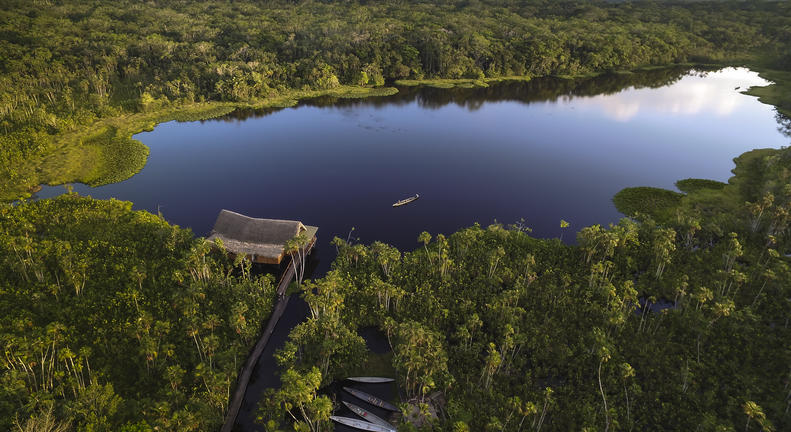Ecuador’s Amazon Basin is believed to be the most biodiverse corner of our planet per square meter with record numbers of plant, mammal, tree, reptile, fish, and amphibian species. Scientists are still discovering dozens every year, from orchids with flowers as tiny as the eye of a needle to large, spectacular trees that no one knew were different from the rest. The numbers are astounding. There can be more tree species in one hectare of the Amazonian rainforest than in the entire United States. And the sheer uniqueness of those life forms also fills us with wonder.
The lushness present throughout the Amazon is mind-blowing, with tall forests that reach heights of over 50 meters, pink dolphins, freshwater rays, prehistoric fish like the Paiche, a dozen monkey, six species of jungle cats, including the great Jaguar, over 600 species of birds, including the hoatzin, a primitive bird that seems to hail straight from the Late Cretaceous, not to mention insects, frogs, bats (there are more bat species in the Ecuadorian Amazon than anywhere else on Earth). This is nature at its most extreme.
Within lies the most complex and intricate network of life our planet holds, and many biological and environmental studies suggest that it is here, in this very specific northwestern edge of the Amazon, where biodiversity is most exceptional worldwide.
These legendary jungles have been off-limits to most of modern civilization. Exploring one of the world’s most emblematic ecosystems never fails to deliver experiences and memories that will last a lifetime. You will walk beneath sky-scraping kapok trees with buttress roots that rise well above your head, listening to the chatter of monkeys and the clamor of blue and gold macaws high up in the gallery.
You will navigate on black-water lakes and along streams, enveloped in what is probably nature’s most glorious soundtrack. Paradise certainly seems at hand. You can climb to the top of natural observation towers and peer out into the distance like an eagle or stand behind a blind and witness thousands of multicolored parrots swarming at salt-clay licks. You will visit the people of the Amazon, discover their ancient wisdom, their customs that are so utterly contradictory to our day and age, as they cope with a world that couldn’t be more different from ours.
Human beings have existed in these forests for millennia and are an integral part of them. Recent discoveries have proven that Amazonian dwellers have been more than just hunters and gatherers throughout the ages.
With a keen sense of agriculture and recent evidence revealing that it was here, in the Ecuadorian Amazon Basin, where Man discovered how to manipulate the cacao seed. Also, critical technological breakthroughs took place in these forests way back in 10,000 BC when the first inhabitants are thought to have made the forest their home.
The capability of farming manioc dates back 10,000 years, and pottery has been recorded as early as 4,000 BC. There are at least seven different languages in the Amazon Basin, none of which are traditionally written yet hold fascinating constructions. In Wao, the language of the Waorani ethnic nationality, the word for the number five is a synonym of the word they use to designate their right hand, and the number ten is the synonym of the left hand!

